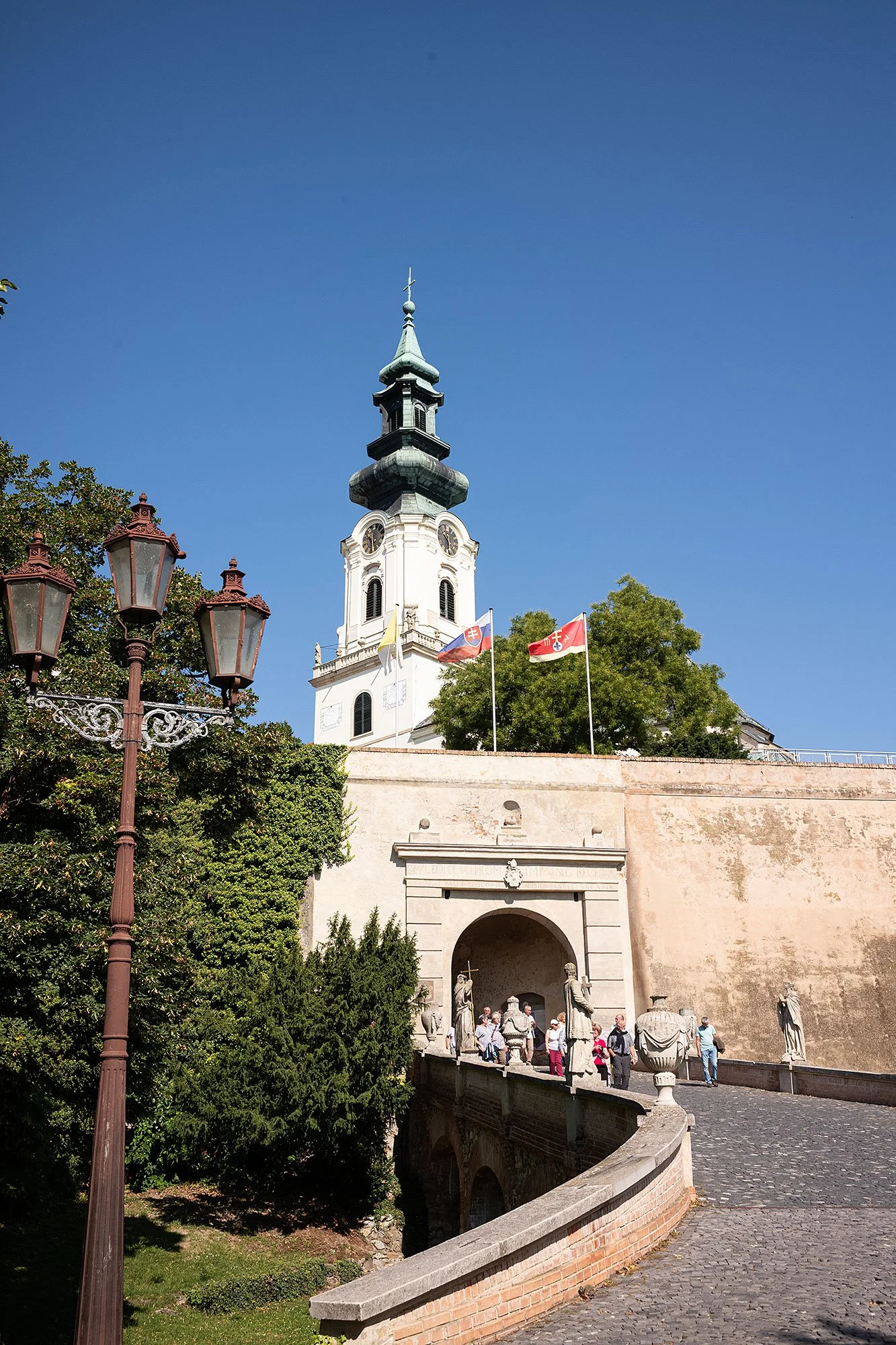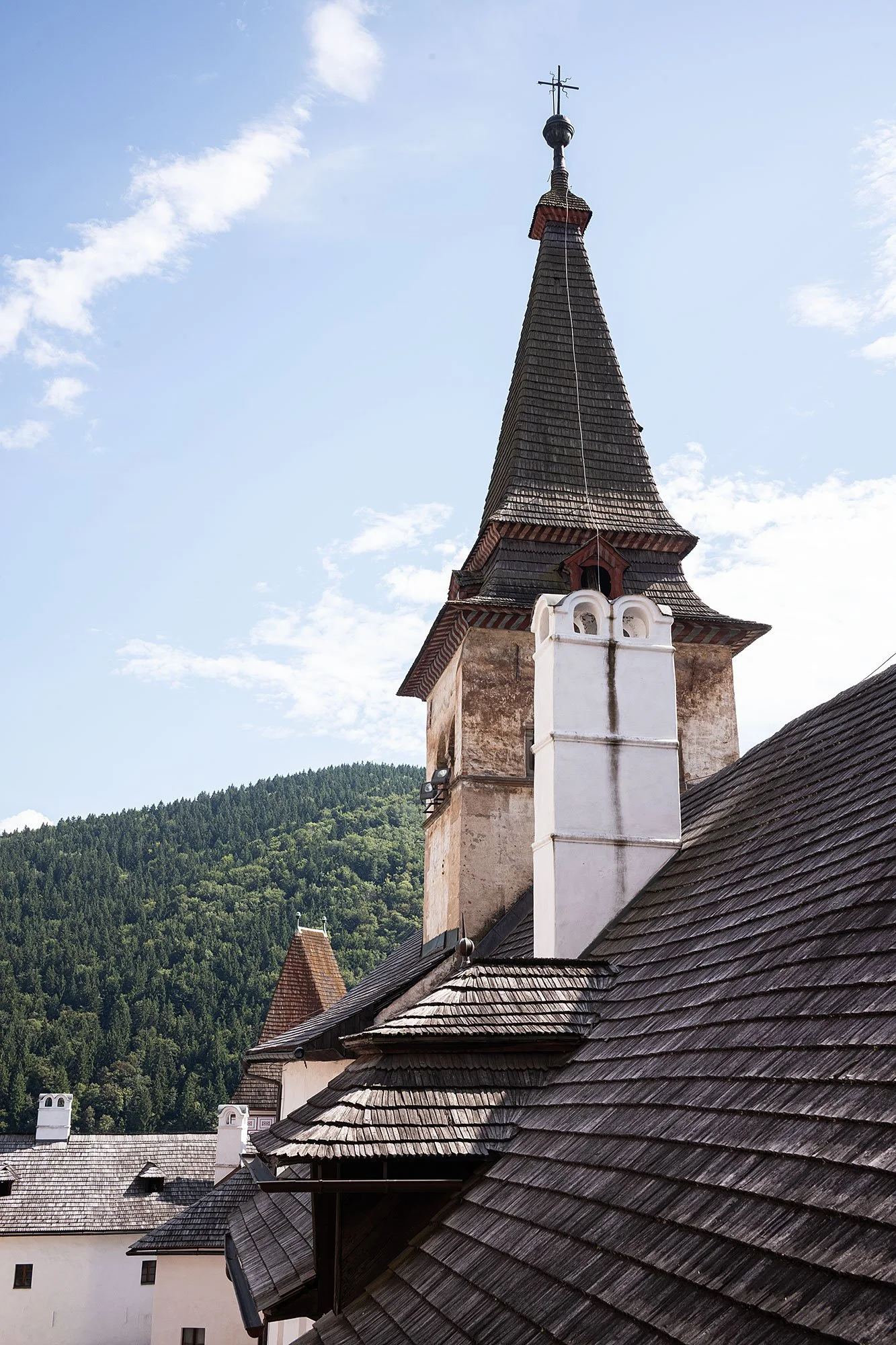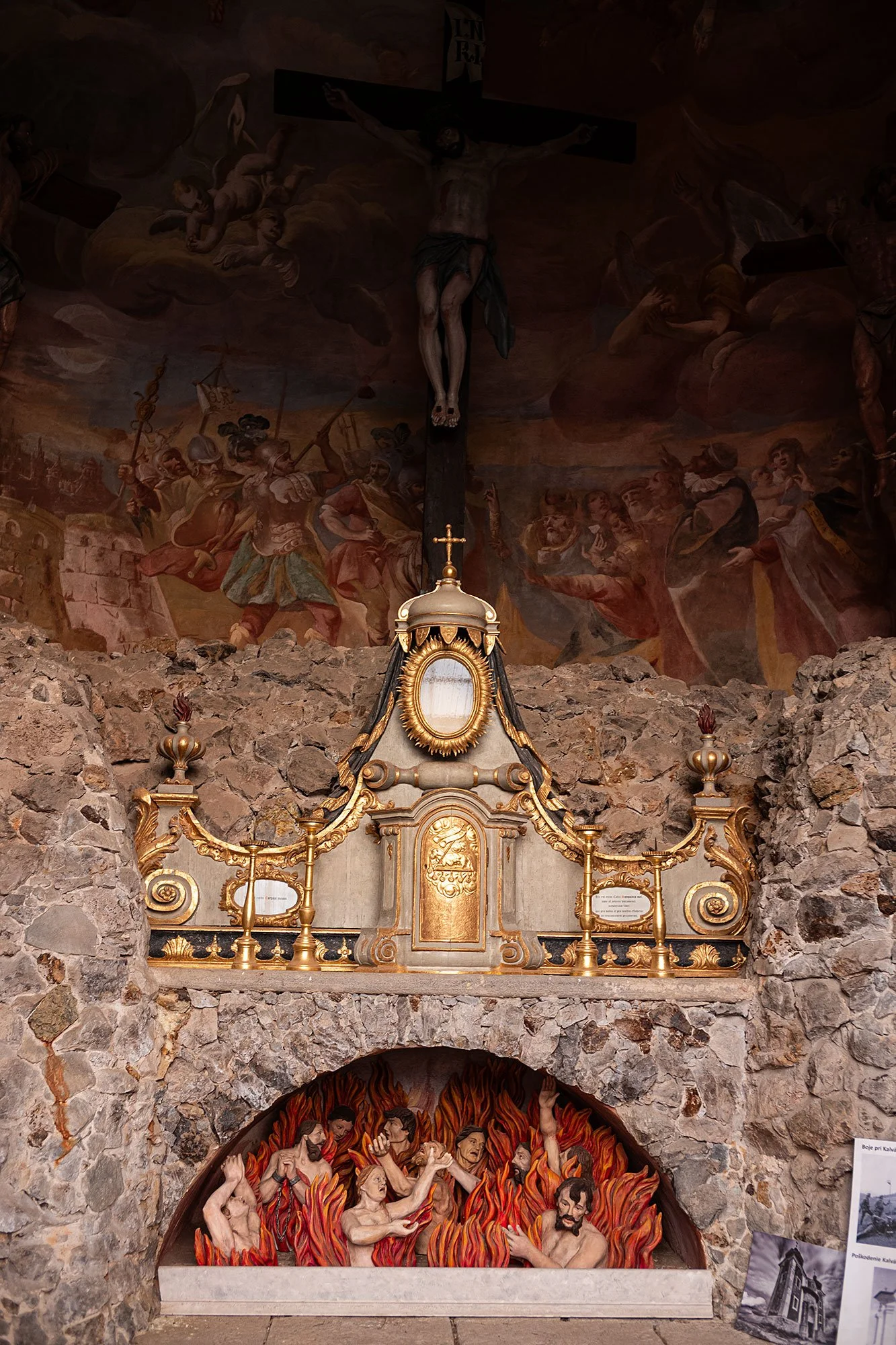Nitra, Orava Castle & The Calvary of Banská Štiavnica.
Roman texts me around 0900. He’s running nine minutes late. He’s had to pick people up from Vienna. I tell him no worries.
My pickup time has already been moved from 0800 and I’m thankful for the extra hour’s sleep. I’m surprised he’s driven to Vienna to do a pickup; it’s going to be a long day for the guide.
I’m the last to be picked up. There’s a woman from Dublin, one from Adelaide, one from the States traveling alone and two friends traveling together, a mother and son from Ukraine, and me. I slide into the last seat in the van and we’re off.
Our first stop is Nitra, one of the oldest cities in Slovakia and it’s fifth-largest. We’ve come to visit the castle, though the highlight is St. Emmeram's Cathedral, dating from the 11th century.
Roman parks the van at the base of a hill and leads us up to to castle, pausing at a statue of Saints Cyril and Methodius, 9th-century Byzantine brothers celebrated for developing the first Slavic literary language by creating the Glagolitic alphabet, a precursor to Cyrillic. They’re also known for their missionary work, coming to be known as the “Apostles to the Slavs” for their work in Great Morovia.
At the Castle Roman tells us to buy a one-Euro entrance ticket which grants us access to St. Emmeram's Cathedral—housed within the castle walls—and the grounds. He points out a viewpoint past a statue of Pope John Paul II and the cathedral off to the right.
There’s some confusion between Roman and the friends from the States about the cathedral. I’m not quite sure what it’s about, but I’m to find out later in the tour.
Roman had suggested we head straight for the cathedral; he’s not wrong. Inside, the church is gorgeous, every inch painted or covered in gilt stucco. It quickly becomes one of my favorite cathedrals in Europe.
Outside, there’s a raised plaza with views out over the city. A statue commemorates Pope John Paul II’s 1995 visit upon which he described Nitra as the “Bethlehem of Christianity in Slovakia.”
Nearby, a Baroque monument commemorates the plague epidemics that affected the city in the 18th century. Called the Marian Plague Column, the column was built in 1750.
I chat with two of my fellow passengers, friends from school who are on a girls trip to Europe, leaving their husbands and children behind. One is interested in safari and I do all I can to convince her to go.
Roman ushers us along. We have a lot to cover and he wants to ensure we get to it all; or as much as possible.
We meet back at the van, the Ukrainian mother and son arriving first, followed by me, the two American women, and finally the three older women. We climb on board and drive to our next stop.
We drive another two hours and I’m surprised to find ourselves at Orava Castle. It wasn’t on the itinerary, but Roman has tossed it in as a bonus. There was apparently another castle he was to take us to but it’s sold out for the day.
Along the way we stop at a gas station for food, and we all grab something to tie us over.
Roman leads us through the main entrance past a historic hearse and through a tunnel that leads to the main courtyard at the foot of the castle.
We’re generally left to our own devices and I begin my exploration, walking ahead of the group and climbing my way up the towers.
The castle was built in the Kingdom of Hungary, the oldest parts of which were built in the 13th century and the moest recent in the 17th century. Much of the 1922 film Nosferatu were filmed here, the castle doubling for Count Orlok's Transylvanian castle.
It’s fun walking around the castle, winding through various passageways and exploring the different rooms. The castle sits on a cliff surrounded by the river Orava and there are a decent number of stairs to get to the upper reaches. I continue to walk on ahead of the group, looking to beat the crowds that follow.
I hear music while visiting one of the rooms in the upper castle. I assume it’s piped in, and am surprised when I find a group of musicians in the next room. They begin another tune and I’m the sole audience member as they play. I tip them on my way out, just as the rest of my group appears in the doorway.
Reaching the top of the castle I step out to admire the views over the valley and town. I imagine it must be something else in the fall, and file the information away. As much as I love visiting Europe in the summer for its days without end, coming back in the fall would be a treat.
A gallery in the rafters is devoted to films that have been made in the area, and there’s a somewhat frightening mannequin of Count Orlok. The group has caught up and Roman points out the posters of some of the celebrated local films including King Thrushbeard and Láska na vlásku, a fairy tale based on Mark Twain’s story The Prince and the Pauper.
I’ve caught up with the group and Roman shows us a place you can rent out for 4500 Euros. He’s taken a fancy to the single American woman and Karen tells me he has weddings on the brain.
Coincidentally, we pass a bridal photoshoot on our way out. I do my best to stay out of the way and think of what a beautiful setting it would be for a wedding. And as it turns out, the Knight’s Hall and the Chapel of St. Michael are available, as evidenced on their website.
Roman is a bit of a spaz, with the best intentions. He talks about a mining town we can visit. He calls to see if it’s open. We won’t make it in time but they can open for us if we are more than five people.
I learn that the American friends had booked a tour of Bratislava and the immediate surroundings, which is why they were confused about the castle. “You must have thought Bratislava was a huge city after driving for three hours,” I joke.
Roman apologizes profusely. He doesn’t make the schedules or assign individuals. He’s given a list of names and a place to pick people up. He tells them that he’ll contact the tour agency to see what the mixup is.
For the Americans it’s a bit too late. They roll with it.
We drive to Banská Bystrica. Roman parks the car and we walk to the square. He tells us we can have some free time to eat dinner and then we’ll head to the Calvary to watch the sunset at 20h44. We look at the time and tell him the sun will be setting at 19h30, less than an hour away. He asks what we’d like to do. We all vote to continue on.
We drive to the parking lot of the Calvary of Banská Štiavnica, a complex of 3 churches and 22 chapels set into the side of a lava column in the middle of an ancient volcano. We park at the base of the hill (named Scharffenberg) and begin walking up to the top.
It’s a beautiful spot and I could imagine Thomas Gainsborough coming to paint a scene or two. I particularly love seeing the sheep and cows grazing on the slopes.
The climb is a bit more than I had anticipated when I reach some of the lower chapels and realize there’s more to go. The path is rocky in places, the steps in need of repair.
I approach the upper church from the side, the towers looming over me as I finish my climb. I take a breath and then proceed to circumnavigate the church. In the back there’s a door that leads to the towers, but it’s closed and locked. A sign indicates that the key resides at the base of the hill; arrangements can be made to visit, but not at this hour.
I’m the first to the top. Roman rounds out our group. He’s carrying a cooler with wine and glasses. He pours us shots of apple liquor. We clink glasses and cheer him and the tour and move on to glasses of wine, which we sip while watching the sun set behind the nearby hills.
I walk to the front of the church and peek in through the barred gates to admire the paintings before taking another walk around the church.
A stone grotto houses an altar representing Christ’s entombment. It’s one of the many chapels, each illustrating a different moment of the Passion.
It’s getting dark by the time we finish our wine and begin our walk down. I turn the flashlight of my phone on and help guide some of my fellow passengers. One of the American women asks me about my travels, comparing this place and that. She’s debating a few places in Europe for the rest of her trip and I do my best to offer my recollections and perspectives.
We stop for dinner at another gas station, buying sandwiches and snacks for the ride home.
When we return to Bratislava, it’s well night. I disembark with a few other guests by Ganymede's Fountain. Roman asks if I’m sure he doesn’t want me to drop him off where he picked me up. I’m sure. I want to enjoy the evening and take in the Old Town on my way back to my apartment. Roman leaves with the American friends for Vienna.
At half past midnight, Roman texts the group. He’s just left Vienna after dropping off his last guest. To add insult to injury, there’s a traffic jam on the highway home. Thankfully, he has the next day off. 🇸🇰






























































